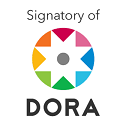Musical learning for communicative skills in students of an initial educational institution, Perú
Abstract
The current study aimed to determine the effects of musical learning on the development of communicative skills in students of an Initial Educational Institution in Andahuaylas. For this purpose, a quantitative approach was used with an experimental design and a pre-experimental subdesign of longitudinal cut. The results showed a significance level of p < 0.05, indicating that musical learning had a statistical influence on the general development of communication skills. In addition, significant impacts were identified in the specific dimensions of listening, speaking, reading, and writing, supported by effect sizes of 1.000. In conclusion, musical learning contributed significantly to the development of communicative skills in students of an Initial Educational Institution in Andahuaylas, evidenced by statistically significant changes and supported by effect sizes. These results highlighted the relevance of integrating music education in educational environments to strengthen students' communicative skills.
Downloads
References
Aloma, M., Crespo, L., González, K., y Estévez, N. (2022). Fundamentos cognitivos y pedagógicos del aprendizaje activo. Mendive. Revista de Educación, 20(4), 12–21. https://n9.cl/jimix
Bolaños, J., Silva, L., y Casallas, E. (2021) La Canción de Contenido Acumulado (CCA*) como estrategia para el mejoramiento de los procesos atencionales en la Primera Infancia. Zona Próxima, (35), 49-66. https://n9.cl/0lh8b
Castiglioni, M. (2021). El programa del ABC musical para la comprensión lectora. HOLOPRAXIS. Revista De Ciencia, Tecnología e Innovación, 4(2), 079-091. https://n9.cl/lcmsq
Del Barrio, L., y Arús, M. (2024). Music and movement pedagogy in basic education: a systematic review. Frontiers in Education, 9(1403745), 1-14. https://n9.cl/ymu6h
Fernández, A., Gómez, B., Binjaku, K., y Meçe, E. (2023). Digital transformation initiatives in higher education institutions: A multivocal literature review. Education and information technologies, 28(10), 12351-12382. https://n9.cl/cjky1
Guaranda, J., y Samada, Y. (2023). Sistema de actividades para el desarrollo del lenguaje oral en niños de 5 años. Universidad, Ciencia y Tecnología, 27(121), 52-63. https://n9.cl/twg02b
Isea, J., Gómez, I., y Comas, R. (2023). Interaction between university extension and curricular innovation: a collaborative and co-creative perspective in higher education. Revista Conrado, 19(3), 469-481. https://n9.cl/jz6dwg
Isea, J, Romero, A., y Molina, T. (2024). Ontology of the university teacher: a transformational leader in lifelong learning. Health Leadership and Quality of Life, 3:483, 1-8. https://n9.cl/dhbk6
Li, M., Liu, F., y Yang, C. (2024). Teachers’ emotional intelligence and organizational commitment: A moderated mediation model of teachers’ psychological well-being and principal transformational leadership. Behavioral Sciences, 14(4), 345, 1-14. https://n9.cl/hyz36
López, J., y Lescay, D. (2023). Estrategia de comunicación para el desarrollo del lenguaje de los niños del subnivel II de Inicial. Varona. Revista Científico Metodológica, (76), 1-19. https://n9.cl/md908
Mendizabal, B., Ferrer, V., Tuncar, D., Cruz, I., y Valentín, T. (2025). La musicoterapia en el desarrollo cognitivo de los infantes. Revista InveCom, 5(3), 1-8. https://n9.cl/ju6jkz
Ponce, D., y Isea, J. (2025). Teorías pedagógicas emergentes en el marco de un mundo multicultural y fractal. EPISTEME KOINONIA, 8(16), 369–390. https://n9.cl/eux84
Song, H., y Cai, L. (2024). Interactive learning environment as a source of critical thinking skills for college students. BMC medical education, 24(1), 270, pp. 1-9. https://n9.cl/nx5swm
Wadiyo, W., Haryono, S., Wiyoso, J., y Malarsih, M. (2024). Bridging musical gaps: creating educational songs with thematic learning for primary school students. Rast Müzikoloji Dergisi, 12(3), 351-374. https://n9.cl/bqprj
Copyright (c) 2025 Edy Chura-Yupanqui

This work is licensed under a Creative Commons Attribution-NonCommercial-ShareAlike 4.0 International License.
LICENCIA DE CONTENIDO
Creative Commons
Atribución-NoComercial-CompartirIgual 4.0 Internacional (CC BY-NC-SA 4.0)
Política propuesta para revistas que ofrecen acceso abierto
Aquellos autores/as que tengan publicaciones con esta revista, aceptan los términos siguientes:
Usted es libre de:
Compartir — copiar y redistribuir el material en cualquier medio o formato
Adaptar — remezclar, transformar y construir a partir del material
La licenciante no puede revocar estas libertades en tanto usted siga los términos de la licencia
Bajo los siguientes términos:
Atribución — Usted debe dar crédito de manera adecuada, brindar un enlace a la licencia, e indicar si se han realizado cambios. Puede hacerlo en cualquier forma razonable, pero no de forma tal que sugiera que usted o su uso tienen el apoyo de la licenciante.
NoComercial — Usted no puede hacer uso del material con propósitos comerciales.
CompartirIgual — Si remezcla, transforma o crea a partir del material, debe distribuir su contribución bajo la lamisma licencia del original.
No hay restricciones adicionales — No puede aplicar términos legales ni medidas tecnológicas que restrinjan legalmente a otras a hacer cualquier uso permitido por la licencia.
DERECHOS DE AUTOR Y PERMISO
La revista permite que los autores tengan los derechos de autor sin restricciones.
La revista permite que los autores conserven los derechos de publicación sin restricciones; y garantizan a la revista el derecho de ser la primera publicación del trabajo.


















